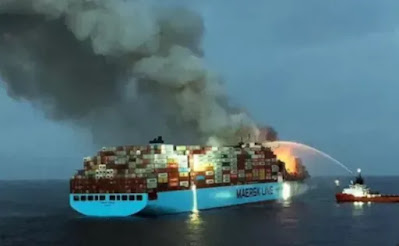How to rescue large cargo ships stranded at sea
World Sea :Thick raindrops hit the windows as if slapping. The ocean was crashing against the ship's hull and strong winds were blowing. It was midnight in 2010. The 230 meter long Kota Kadu was stranded off the coast of Hong Kong.
The crew was rescued safely but the ship's salvage master, Captain Nick Sloan, was wearing a life jacket and standing on the bridge of the ship, preparing himself for the bad moments to come. He saw that even at night the force of the storm was raging on this wretched ship.
Sloan was there with five other members of the Salvage team. He had arrived in the South China Sea a few days earlier to rescue Kota Kadu. When it was predicted that the storm would repeatedly hit the stranded ship, Sloan decided to spend the night on the ship with his small team.
They wanted to know how much the ship tilted due to the storm, in order to find out which part of the ship it collided the most with, they had to decide their next course of action. But it was a very dangerous job.
We almost lost it that night," he says.
Ships carrying cargo around the world, which account for 90% of world trade, are always at risk of having an untoward incident before they reach their destination.
According to the Safety and Shipping Review conducted by the insurance company Alliance, in 2021 alone there were major accidents with 27 cargo ships, and with 357 ships in the last decade. They caught fire, they hit rocks, boulders and sand dunes, they also got damaged. But they are not always submerged.
Whenever there is an opportunity to rescue a large ship, its owners almost always try it, because these ships are worth millions of dollars.
People who are called by the shipping companies on such occasions are called salvers. And they have seen wonderful things in the oceans. When the big ship Evergreen got stuck in the sand and blocked the Suez Canal, which caused problems in the global supply chain last year, the Salvars came to the rescue.
But when ships weighing tens or hundreds of thousands of tons get stuck somewhere, how do they get released?















0 Comments